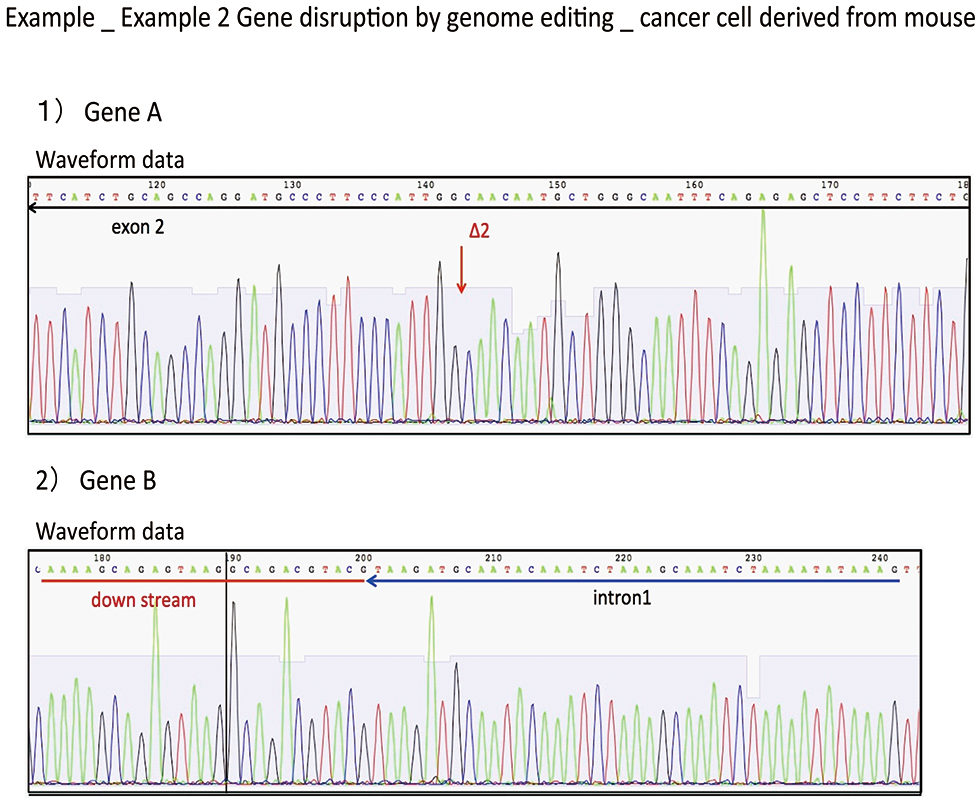Cellular Genome Editing
The introduction of CRISPR to cellular genome editing has greatly increased interest in targeted genome modification of human cancer cell lines. Even though chromosomal and gene amplification of immortalized cells make things complicated, you have a good chance to obtain a homozygous mutant, moreover a multi-genes homozygous mutant by CRISPR. We have already achieved a triple homo mutant cell establishment.
Our successful experiences
HEK293 / HEK293 / A549 / U937
OCI-Ly3 / OCI-Ly10 / HeLA
L929 / STO / 3 /T3
How to edit cellular genome by CRISPR-Cas9 system

- Preparation of cell line (about 1 week)
Clients will provide the cell line of interest in a frozen stored vial. Then, the frozen vial are thawed and the cell growth and mycoplasma infection are checked in a routine culture protocol. - Preparation of gRNA (about 1 week)
The gRNA is designed by both web services, “Optimized CRISPR Design (http://crispr.mit.edu/)” and “CRISPRdirect (http://crispr.dbcls.jp/)”, and a commonly highly specific gRNA in both platforms is chosen. The Cas9-gRNA expression vector (Broad Institute, MA, USA) for the target gene is constructed in our lab. The Genomic sequence of the gRNA target of the cell is confirmed before transfection.- Transfection (about 1 week)
Cas9-gRNA expression vector prepared for transfection is introduced to the cells using 4D-Nucleofector ™ (LONZA). Transfected cells are cultured in 96-well cell plates and grown for screening (Surveyor assay or PCR screening). - 4. Cell line validation (about 3 weeks)
The targeted cell lines are established by single cell dilution from targeted cell populations. The selected clones are expanded to banking. The genetically modified cell line is validated by a final genome sequencing.
- Transfection (about 1 week)

